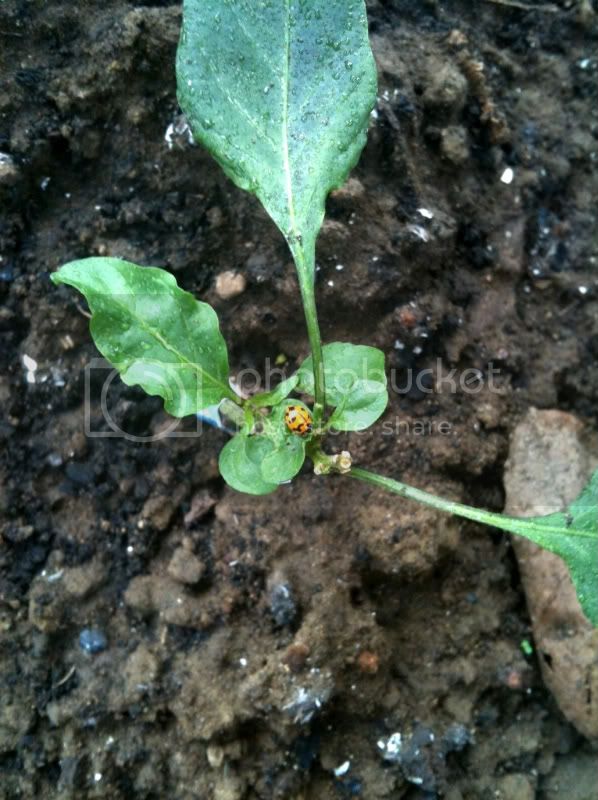What products contain Malathion? Does it kill other insects well or just flies? I am sightly tired of fighting this battle, I just want to wipe then out, especially since they are inside... What about something to kill in the soil as well.
the product's name is malathion. i don't know if you can get these in your area but i am sure there are other types over there. ask your local nursery.
unfortunately malathion kills all insects good and bad...
what infestation you have in your soil ?
BIOLOGICAL CONTROLS:
* Natural enemies of whitefly include small birds, spiders, lacewings, hoverflies, ground beetles, mirid bugs and damsel bugs. The adults and larvae of some ladybirds also feed on whiteflies. Habitat, such as a border of perennial plants, needs to be available all year round as a refuge for these predators.
* An important predator and parasitoid of whiteflies is the tiny wasp Encarsia formosa. It is available commercially from Biological Services, PO Box 501, Loxton, SA 5333 Ph 08 8584 6977. It is most likely to be effective inside glasshouses rather than outdoors, Encarsia wasps kill whitefly nymphs in one of two ways: they either lay an egg inside the nymph, providing food for their young, or they kill the nymph right away and feed on it. Once the whitefly nymphs are parasitised they turn black and no longer feed.
PHYSICAL AND CULTURAL CONTROLS:
If you had clouds of whiteflies on your tomatoes or beans in the previous year, then acting early in the spring is your best bet to control this pest! Useful strategies include:
* Vacuuming in the early morning when whiteflies are cold and slow moving can remove many of the adults before they have a chance to lay many eggs. After vacuuming, empty the vacuum bag into a plastic bag and put in the freezer for 24 hours.
* Hang sticky yellow traps above the plants, at the beginning of the season to detect an invasion early. Tapping the plants with a stick will cause the whitefly to fly up and onto the traps. Whiteflies are strongly attracted to the colour yellow, so you really shouldn't wear yellow clothing around whiteflies or you may carry them from plant to plant.
* Physical barriers such as floating row covers or mosquito netting work very well for early-season protection.
* Handpick older leaves to remove young whitefly stages.
* Avoid using a lot of nitrogen fertilizer, including manures, as succulent growth will increase whitefly populations. You may need to check your phosphorus and magnesium levels, as deficiencies in these are believed to contribute to whitefly infestations.
* Try a high pressure hosing in the early morning, 3 days in a row.
Use a cloth soaked in metholated spirit to 'brush' them off.
ORGANIC WHITEFLY CONTROL
Whiteflies suffer from an identity crisis, as they are not flies at all, in appearance they resemble tiny, pure white "moths" but are in fact, closely related to sap-sucking aphids. Aphid cast-off skins could be mistaken for whitefly, but whitefly will quickly flutter up and fly away when disturbed, while the cast-off aphid skins will drop off. Just shake the plant to find out which you have! While there are about 20 species in Australia, the most serious pest is the greenhouse whitefly Trialeurodes vaporariorum that attacks a very wide range of plants including tomatoes and beans. Unfortunately, whiteflies don't go round in ones or twos - they go round in hordes, so a severe attack can have a major impact on a plant.
Whiteflies suck sap from the plant, resulting in a yellow mottling on the surface of the leaf, as well as leaf loss, wilting and stunting. Not only do they feed on plants, but they also produce honeydew, which spoils the plants' appearance, attracts ants and black sooty mould. Whiteflies can also transmit plant viruses.
Adult whiteflies have a 3mm wingspan and are covered with a white, waxy coating. Each adult female lays about 200 eggs on the underside of the leaves, the eggs hatch in 8 days. Newly hatched ‘crawlers’ or ‘nymphs’ move around for a few days but then insert their feeding tube and lose their functional legs. At this stage they can be confused with scale.
Most species can complete a full life cycle in 20-30 days, less in summer. Whiteflies have no hibernation period and must have a suitable host all year. Severe winters reduce numbers considerably.
In many ways, whitefly is a modern pest, created by the over-use of pesticides that have killed off its natural enemies. One study has even demonstrated an increased whitefly reproductive capacity when sprayed with certain insecticides!
LEAST TOXIC CHEMICAL CONTROLS:
Whiteflies began showing resistance to synthetic insecticides many years ago, and have since become a major problem in some crops and greenhouses. To control an infestation use a suitable organic spray as soon as adults are noticed, make sure you spray underneath the leaves:
* Insecticidal soap sprays such as Natrasoap are a good choice of control for the home gardener; spray every 2-3 days for 2 weeks. Natrasoap
* Spray Pest Oil or try making your own oil spray by mixing 1 tablespoon dishwashing liquid detergent with 1 cup of cooking oil; add 1 to 2.5 teaspoons of this solution to 1 cup of water, spray onto plants every 10 days.
* Botanical insecticides such as garlic are useful. Research undertaken in NZ on neem’s effectiveness for whitefly found that it had a major impact by preventing the ‘nymph’ stage from developing into an adult; the nymphs tend to disappear from the treated plants.
hope it helps......





